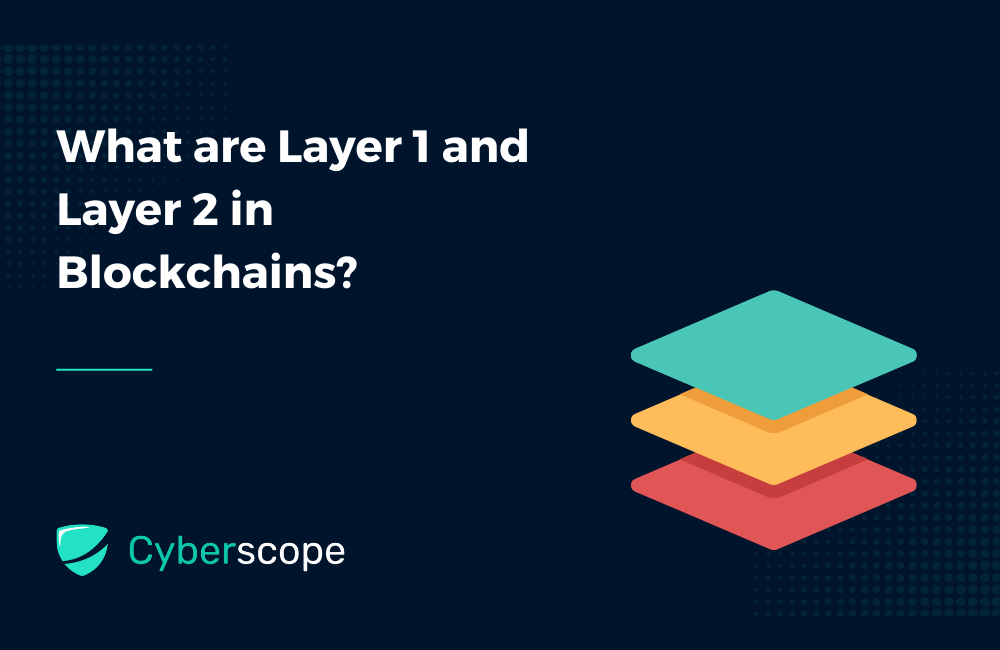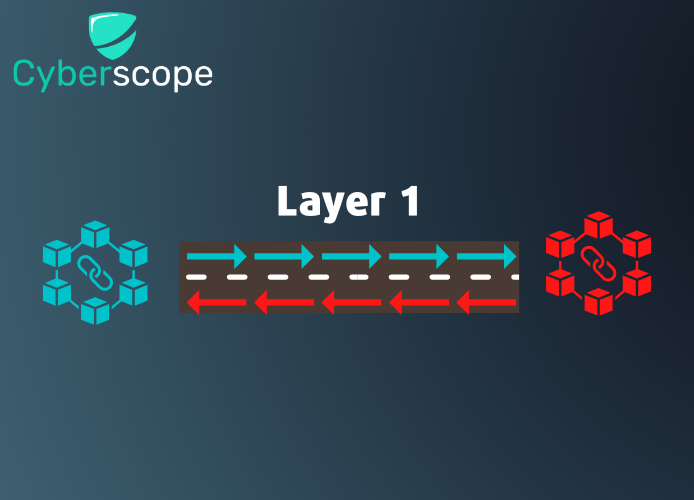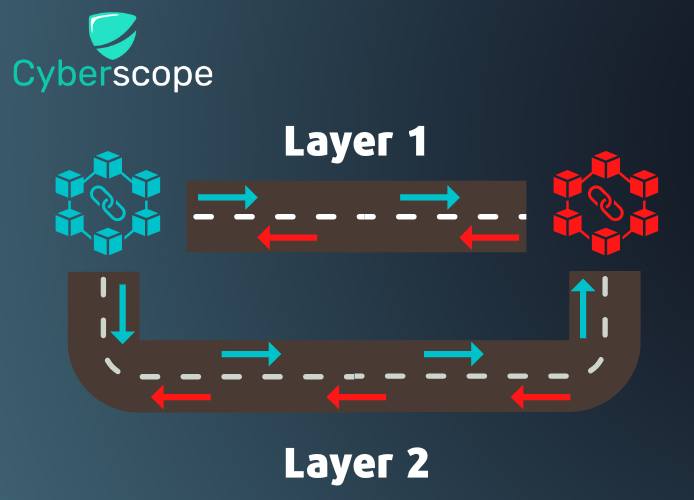.jpg%3Falt%3Dmedia&w=640&q=75)

What are Layer 1 and Layer 2 in Blockchains?

Introduction
You may know what a blockchain is and most probably you are using one right now for your transactions. You may have also heard of the terms Layer 1 and Layer 2 but without further knowledge of what they really are. In this article, we will explain what each one represents in blockchain technology and why the Layer 2 scaling solutions are important in the scalability of the blockchain and in the overall efficiency of crypto transactions.
What is Scalability and why is it important?
It frequently takes a significant amount of time and processing power to complete all the steps for a blockchain transaction. A blockchain network can become clogged with transactions that are stacked on top of each other. In that case, the application is unable to fulfil all transaction requests from all users. This creates an inequitable user experience. Consequently, scalability is a key requirement for the future of blockchain networks.
Scalability refers to a blockchain network’s ability to handle increasing numbers of transactions without slowing down. Generally, the higher scalability is achieved, the better service is.
What blockchain Layer 1 and Layer 2 are?
To analyze further how the scalability of a network is improved, let’s get clear on what Layer 1 and Layer 2 stand for.
Layer 1 of a blockchain system is called the base layer -the main structure- of a blockchain network. Chains of Bitcoin, Ethereum and BNB are famous examples of first-layer blockchains.
Layer 2 networks are built to run on top of the base blockchains. Polygon is a well-known second layer that runs on top of -the first layer blockchain-Ethereum.
The scalability of the Blockchains can be improved using Layer 1 and Layer 2 solutions. A Layer 1 solution will affect the underlying rules of the base blockchain. On the other hand, a Layer 2 solution will utilize an external network to conduct transactions separately from the base chain.
Why the role of Layer 2 protocols is important?
Blockchain technology may be growing rapidly, but it’s not without its flaws. People are increasingly interested in crypto, while solutions in DeFi and NFTs are gradually bringing blockchain under the limelight. Due to the high number of users on networks, transactions can quickly become slow and congested resulting in delayed outcomes. Developers have had to be creative in their approaches to resolving blockchain-related issues; for instance, utilizing a secondary blockchain to help relieve network congestion.
The Layer 1 blockchain is responsible for transaction validation, but this affects the processing speed of the blockchain network and causes scalability and experience issues. The Layer 2 blockchain could provide the support required for Layer 1 blockchain by taking away certain tasks from the latter.
The advantages of Layer 2 blockchain protocols in terms of no capacity restrictions and improved transaction speed are crucial for the advancement of blockchain technology. Quick and cost-effective transaction processing is an essential element of blockchain technology.
Layer 1 scaling solutions
Several options exist for Layer 1 blockchains that can increase the number of transactions processed by the network and the overall capacity.

Consensus Protocols
There are several consensus mechanisms some of which are more efficient than others. The Proof of Work (PoW) consensus protocol is the one currently in use on popular blockchain networks like Bitcoin. While PoW is secure, it can be slow. Because of this, many newer blockchain networks prefer the Proof-of-Stake (PoS) consensus mechanism. Instead of requiring miners to solve cryptographic algorithms, which take up a lot of computing power, PoS systems process and validate new blocks of transaction data based on participants who stake collateral in the network.
Block Size Change
The size of each block on a blockchain can have a significant influence on the efficiency and capacity of the network. The bigger the size of the block, the more the transactions can enclose. However, that does not come without cost. The change of the block size of cryptocurrency requires the developer team of the hard fork which may not be wise. Another disadvantage is that a large block requires a lot of mining power and the efficiency it offers is not exponential in analogy with the block size (32 times larger blocks can be only up to 16x faster).
Sharding
An alternative way to increase a network’s production is sharding. With that method, the blockchain’s operations are split across multiple smaller “shards” that can be processed simultaneously.
Layer 2 scaling solutions
As explained before Layer 2 solutions enable transactions to take place on an external network that runs in parallel to the main chain.

The solutions are categorized as below:
Rollups
In zero-knowledge rollups, off-chain transactions are bundled together and submitted as one transaction on the main chain. Validity proofs are used to check the integrity of transactions, and assets are held on the original chain with a bridging smart contract that confirms the rollup is functioning as intended.
Sidechains
Sidechains are separate blockchain networks that are connected to their larger parent or “main” chain. The signature data of a transaction on the parent chain is copied to the sidechain and verified by a consensus algorithm in order for it to be added to the sidechain as a new block. Transactions can only occur between the main chain and its connected sidechains; sending funds from one sidechain to another requires input from the original transaction on the parent chain.
State channels
State channels are two-way communication environments between transacting parties that use pre-agreed smart contracts or multi-signature security to seal off a portion of the underlying blockchain and connect it to an off-chain transaction channel. They enable parties to interact directly on the blockchain network. This allows for transactions to be conducted without involving the main chain. Consequently, miners would spend less time verifying transactions, leading to improvements in processing rates.
State channels don’t rely on transaction verification through the primary blockchain. Instead, they utilize smart contracts. Once a transaction is completed, state channels ensure that the resulting state is stored on Layer 1. However, documenting the final transaction details on the ledger can leave it vulnerable due to the public’s visibility of the ledger.
Nested blockchains
Nested blockchains consist of a primary blockchain with one or more secondary chains. The main chain is responsible for assigning tasks and controlling parameters, while the secondary chains carry out transactions and report back for feedback and approval. This design allows chains to operate independently while still being able to communicate and coordinate with each other.
Closing thoughts
The numerous advantages of Layer 2 blockchain protocols and their working mechanisms prove how crucial they are. The solutions they offer, are an inventive method for addressing any worries regarding the scalability of current blockchain networks. The use of blockchain technology is skyrocketing rapidly while bringing in a wide variety of new options and it seems like Layer 2 solutions and protocols will be a vital part of the future.
Recent Posts
.jpg%3Falt%3Dmedia&w=640&q=75)


What is a Fallback Attack in Smart Contracts?
5 months ago
